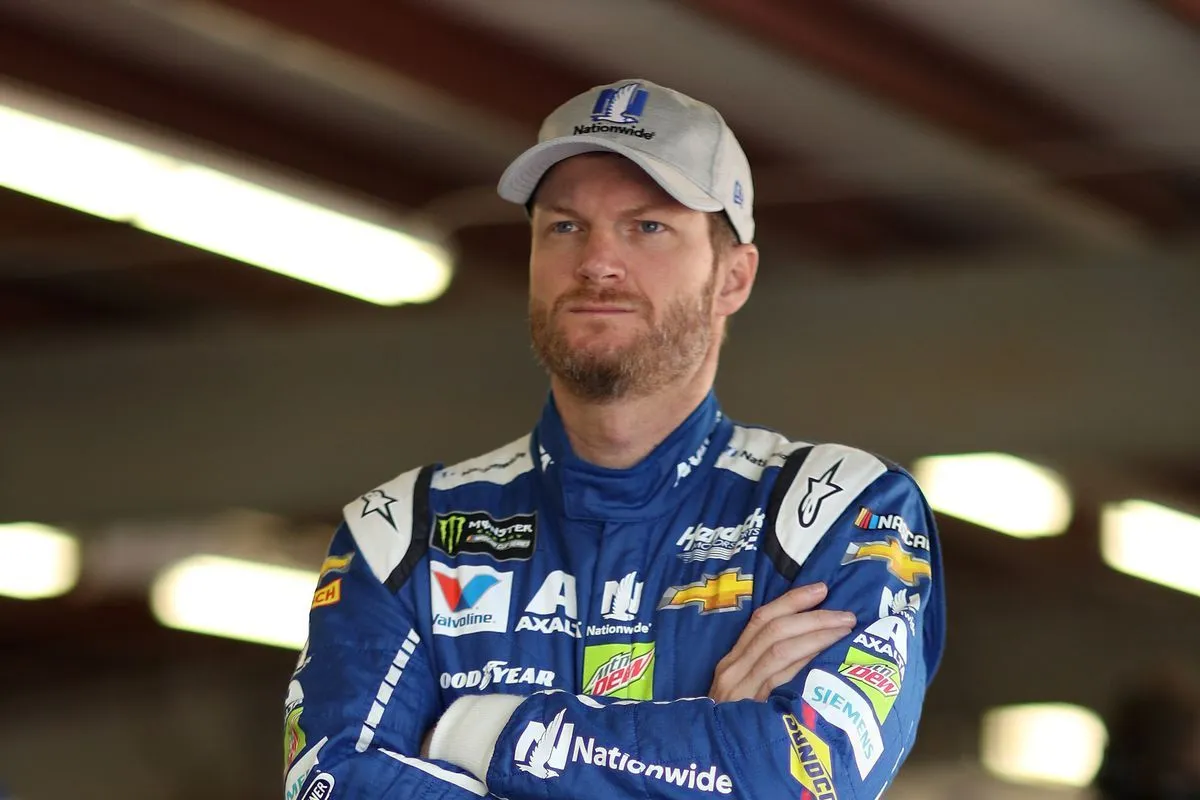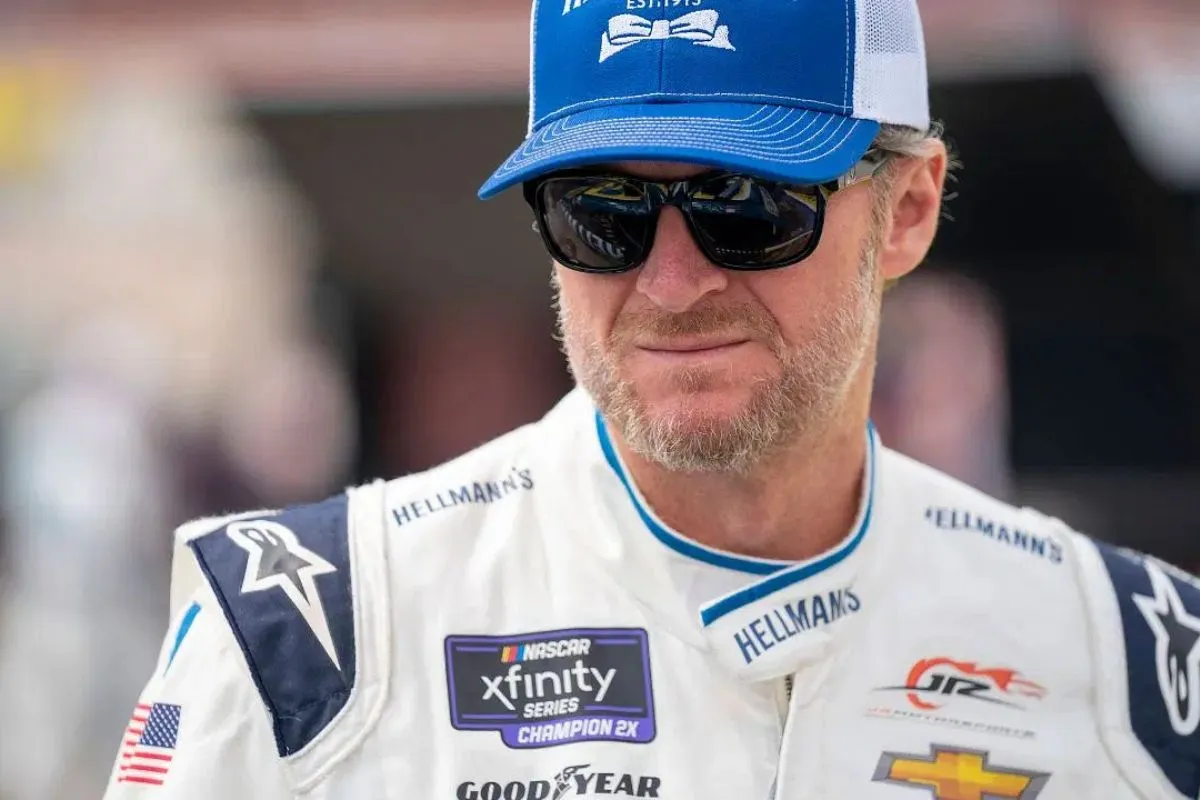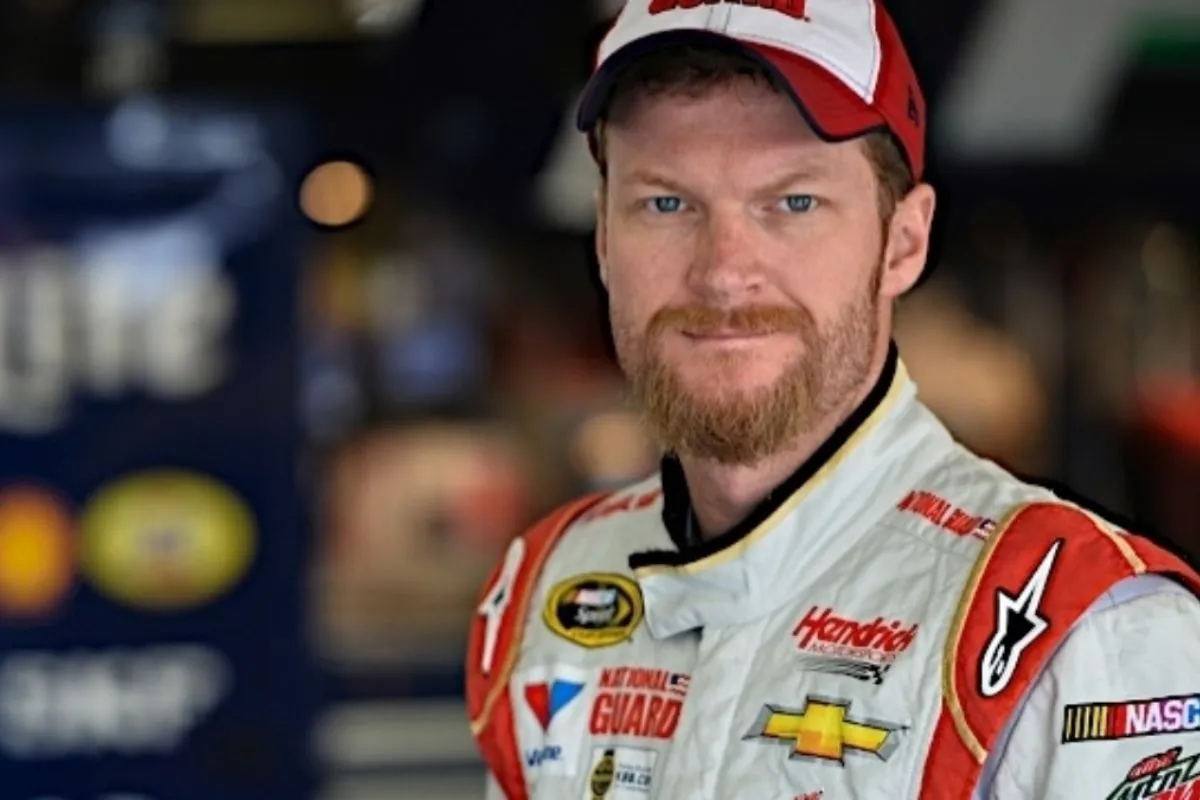Dale Earnhardt Jr. Exposes NASCAR: Dale Earnhardt Jr’s recent revelations have uncovered NASCAR’s risky safety gamble at Bristol Speedway, showcasing the unexpected challenges arising from controversial tire strategies and demanding track conditions. The implications of Goodyear’s tactics, coupled with Dale Jr’s insights, underscore a complex interplay of safety concerns and driver frustrations within the racing landscape. The intense competition and strategic maneuvers amidst such conditions highlight a compelling narrative that reshapes the dynamics of NASCAR events.
Key Takeaways
- Dale Jr highlights safety risks at Bristol due to tire wear.
- Concerns raised about NASCAR’s handling of tire situation.
- Drivers exposed to safety hazards due to tire performance.
- Criticism towards NASCAR for risky tire strategy.
- Safety gamble evident in intensified competition amidst challenging conditions.
Unexpected Turn of Events at Bristol
The unfolding events at Bristol Speedway took an unforeseen trajectory, defying the preconceived notions and expectations of both seasoned racing experts and devoted fans alike. Safety concerns loomed large as the compact track size intensified the risks for drivers, leading to a palpable sense of unease among the racing community. Driver frustration was evident as the track conditions proved to be particularly challenging, with unexpected bumps and turns catching even the most experienced racers off guard.
Despite the adversity, the fan reaction was mixed, with some expressing admiration for the skill and bravery displayed by the drivers, while others voiced concerns about the safety implications of pushing the limits in such demanding conditions. The unexpected winners that emerged from the chaos added another layer of intrigue to the event, showcasing the unpredictable nature of short track racing.

Goodyear’s Unexpected Move
Amidst the intense competition at Bristol Speedway, Goodyear’s strategic decision to induce intentional tire wear on the repaved surface stirred controversy and greatly impacted the race outcome. The unexpected move by NASCAR and Goodyear to promote tire degradation as a strategy at Bristol Motor Speedway (BMS) led to a race characterized by challenging track conditions****. This decision forced teams to navigate a delicate balance between maintaining tire longevity and peak performance, adding an extra layer of complexity to the already demanding 500-lap event.
| Tire Strategy | Track Conditions | Driver Reactions | Race Outcomes |
|---|---|---|---|
| Intentional tire wear was induced to spice up competition | Repaved surface at BMS was challenging for drivers | Drivers expressed frustration at the unexpected tire strategy | Only five drivers finished on the lead lap, impacting the race outcome |
The move by Goodyear and NASCAR not only altered the expected dynamics of the race but also raised safety concerns among drivers and teams. The disparity in tire management strategies among competitors further accentuated the already intense nature of the Bristol Speedway, ultimately reshaping the race results. As the implications of this strategic decision unfolded, it became evident that tire strategy would play a pivotal role in determining success at BMS, leaving teams to reevaluate their approach to tire management in future races.
Bravo @GoodyearRacing
These drivers have got to be smart with these tires today. We will see who can balance pushing toward the front vs. killing their tires. This is fun to watch.
— Dale Earnhardt Jr. (@DaleJr) March 17, 2024
Dale Jr’s Reaction and NASCAR’s Discrepancy
In light of the controversy surrounding Goodyear’s new compound at Bristol Speedway, Dale Earnhardt Jr delivered a critical analysis of NASCAR’s handling of the tire situation, shedding light on a significant discrepancy in the racing environment. Dale Jr’s analysis revealed several key points regarding the safety concerns and driver reactions at Bristol:
- Unexpected Tire Changes: Dale Jr highlighted the unexpected need for tire changes after just 30 laps due to the peculiar resin on the freshly repaved Bristol surface. This raised concerns about the durability and performance of the tires under these conditions.
- Driver Reactions: Many drivers, including Dale Jr himself, expressed frustration and concern over the handling of the cars on the Bristol track. The quick deterioration of the tires affected the racing dynamics and forced drivers to adapt their strategies on the fly.
- Safety Concerns: The discrepancy in the tire performance posed safety risks for the drivers, as the rapid wear and tear could lead to potential accidents on the track. Dale Jr emphasized the importance of prioritizing safety in NASCAR events.
- NASCAR’s Response: Dale Jr’s analysis also brought attention to NASCAR’s role in managing such discrepancies and ensuring the safety and fairness of the races. The organization faced criticism for the handling of the tire situation and the impact it had on the drivers and the overall race environment.
“This is what’s frustrating about these races were there are some things that’s frustrating about it if you’re on a pit box you know NASCAR is going to alter their you know NASCAR whether they want to believe it or not they call yellow’s differently in certain races for different reasons right for different reasons right?”
Managing Chaos on the Track
Steering through the tumultuous conditions at Bristol Speedway, drivers faced a challenging task in controlling the chaos on the track during the race. The ever-changing track conditions demanded quick thinking and adaptability from the drivers. Driver strategies became essential in maneuvering the unpredictable surface, with some, like Denny Hamlin, capitalizing on the chaos to gain an edge. Hamlin and his team’s ability to time their pit stops strategically showcased the importance of adapting to the circumstances on the track.
Team communication played a key role in managing the chaos, with crews relaying critical information to drivers about the evolving track conditions. This coordination guaranteed that drivers could make informed decisions regarding their strategies during the race. The intensity of the competition amplified as drivers battled not only each other but also the challenging environment, testing their skills and resilience.
Despite the challenging conditions, some drivers, like Ryan Blaney and Kyle Busch, struggled to find their footing amidst the chaos. Their difficulties highlighted the unpredictable nature of racing at Bristol Speedway and the importance of being able to adjust quickly. The race intensity at Bristol exposed the drivers to a unique set of challenges, where only those who could effectively manage the chaos emerged victorious.

Next-Gen Challenges and Changes
The evolution of NASCAR’s Next-Gen platform has brought forth a series of challenges and changes that are reshaping the landscape of short track racing. These developments have sparked discussions around safety concerns, performance struggles, driver feedback, aero modifications, and track challenges.
- Safety Concerns: The introduction of the Next-Gen platform has raised safety concerns due to the higher speeds and closer racing it enables. Drivers and officials are working together to address these concerns and guarantee the safety of everyone on the track.
- Performance Struggles: Some drivers have faced challenges adapting to the new platform, leading to performance struggles on short tracks like Bristol. The need to find the right balance between speed and control is vital in overcoming these hurdles.
- Driver Feedback: Driver feedback has been instrumental in shaping the changes made to the Next-Gen platform. Their insights and experiences provide valuable information for NASCAR to enhance the overall racing experience and address any issues that may arise.
- Aero Modifications: NASCAR’s response to driver feedback included aero modifications such as the introduction of a new diffuser and splitter. These changes aim to enhance passing opportunities and improve the overall competitive nature of short track racing.
“If I’m a crew chief on the pit box and this starts happening I’m like how do they call cautions today because of this right and I thought that they would be quicker to throw a yellow as a car gets into a wall car gets sideways yellow because we don’t want to have cars blowing tires and we don’t want to have this shit that happened at Indy to happen here.”
Additional Note on Goodyear’s Impact
Highlighting the pivotal role of Goodyear’s customized compound for short tracks, the recent race at Bristol showcased a notable impact on driver control and strategy. Goodyear’s innovation in developing a new compound tailored for short tracks, combined with the resin on the concrete surface, played a critical role in providing drivers with ample traction during the race. The rubber shredding off the tires like a cheese grater not only enhanced driver skill in maneuvering the track but also influenced tire strategy substantially.
Driver skill became paramount as they had to balance pushing their cars to the front while also preserving their tires due to the unique track conditions. This dynamic added an extra layer of complexity to the race, testing the drivers’ ability to make strategic decisions on when to be aggressive and when to conserve their tires. Dale Jr’s acknowledgment of Goodyear’s contribution highlights the importance of tire management in achieving success on short tracks like Bristol.
The combination of Goodyear’s innovation, driver skill, and the challenging track conditions at Bristol contributed to heightened race excitement. Fans witnessed a thrilling competition where drivers had to navigate not only the other cars on the track but also the tire wear and degradation, making for an engaging and unpredictable event. Overall, Goodyear’s impact on the race at Bristol underscored the vital role of tire technology in shaping the dynamics of NASCAR races on short tracks.

News in Brief
In light of Dale Earnhardt Jr’s recent revelations at Bristol, it has become apparent that NASCAR’s safety measures may be at risk due to Goodyear’s unexpected move.
The disparity between Dale Jr’s reaction and NASCAR’s handling of the situation highlights the challenges of managing chaos on the track. As the sport faces next-gen challenges and changes, it is essential for stakeholders to address these issues promptly to safeguard the safety of drivers and the future of NASCAR.
Our Reader’s Queries
Q. What happened to Dale Jr at Bristol?
A. The shifter tunnel column was ablaze,” revealed Earnhardt. “I noticed smoke inside the car and hoped it wasn’t me, but alas, it was. On the final lap, I witnessed a sizable fireball engulfing the car’s tunnel, and I could feel the heat. Needless to say, my uniform was scorching
Q. Who was at fault for Dale Earnhardt?
A. Dale Earnhardt Jr. pardoned Marlin and urged those who cherished his father to refrain from assigning blame for his passing. On February 20, Marlin publicly declared his innocence, stating, “I certainly didn’t act with intent.
Q. How many wins did Dale Earnhardt have at Bristol?
A. During his peak, Earnhardt faced primarily two main adversaries at Bristol: Darrell Waltrip, boasting the most victories at 12, and Rusty Wallace, matching Earnhardt’s nine triumphs.
Q. How many kids does Dale Earnhardt Jr have?
A. Apart from his racing endeavors and NASCAR analysis, Earnhardt Jr. cherishes his role as a father to two daughters — 5-year-old Isla Rose and soon-to-be 3-year-old Nicole Lorraine. Earnhardt Jr. shares that Isla is beginning to grasp his profession as a race car driver.
ALSO READ: Dale Earnhardt Jr and JR Motorsports Pressured: Debutant’s Xfinity Craft Shines!
